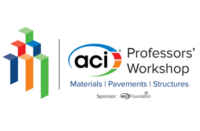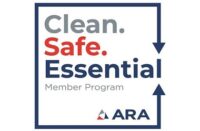
Getting your foot into an architect’s office can be a daunting task. The initial introduction is intimidating, but it can be easier if you figure out a way to get a captive audience. One such avenue is through architectural presentations.
Licensed architects are required to earn a certain number of continuing education credits to maintain their license from the American Institute of Architects. So, when you, a decorative concrete contractor, offer them a way to earn desired credit, you have at least one guaranteed hour of their attention.
But how do you become an AIA-approved provider? It may be simpler than you think.
Step 1: Apply to become a provider.
Just like anything in life and business, if you want to do something, you have to start by asking. The AIA website provides information about the different education provider subscriptions. My company, Colorado Hardscapes, signed up for the Basic package, which allows us to present face-to-face in our region (which for our area includes six states). If you offer goods or services to a broader audience, you may want the Passport subscription where you can present anywhere and provide distance-learning options.
Once you determine which subscription you want, you complete and submit a three-page application, pay a fee and agree to maintain the required credentials to become an approved provider.
Each subscription is for one calendar year (expiring Dec. 31) so I recommend starting Jan. 1 to get the most value for your dollar. The application takes up to 10 business days to be processed. Once you are accepted, you’ll receive an email with your provider ID and the next steps.
Step 2: Educate yourself.
AIA’s introductory email welcomes you as a provider and lists a good number of resources. Read through these and watch the videos. They will help you put together presentations and get your course(s) approved. Do this before you build any of your presentations.
AIA also provides logos and slide templates for your use. Understand the verbiage you should use as well as the logo-use guidelines. There are rules on what you can and can’t say during a presentation.
Step 3: Put together your content.
In the application process, you’ll agree to provide learning objectives based on the AIA standards. The benefit of our industry’s niche is most decorative concrete topics also fall within the Health, Safety and Welfare (HSW) course qualifications, making our classes additionally valuable to an audience of architects. With your content, you’ll need to clearly identify four learning objectives that each encompass the behavior, condition and criteria the audience will experience in your presentation.
Presenting an official AIA course isn’t a time for sales pitches. This is a time to educate architects and let them know you’re a knowledgeable resource. As a resource, you’re considered an expert in the field, and as a result, they should call you the next time they have a decorative concrete question.
Also determine the length of your presentation. I recommend a standard one-hour course. Most architectural offices can set aside a lunch hour for presentations. Much more than that is a little trickier.
Step 4: Submit your content for approval.
For your presentation to become an AIA course, your course description and learning objectives must first pass the AIA folks’ muster. It’s important to read their guidelines and resources very carefully as they’re particular about their requirements. This is done via an online portal, which you’ll learn about through the training materials in the welcome letter.
It takes five to six business days for AIA to review your content and give you an answer. Be sure not to book any presentations until you know your course is approved.
Step 5: Book the presentation.
If you’ve ever tried to book a presentation for architects without the benefit of an AIA-approved course, you’ll be pleasantly surprised how much easier it is when you offer approved courses.
I recommend typing a one-page flier which includes the approved course number, description and objectives. Add a couple of representative photos from your presentation and save it as a PDF you can send to the architectural firms after you call them.
Here in Colorado, the phrase “lunch and learn” is widely used among architect offices and most firms already have a day and time each month set aside for approved courses. All you need to do is call and get on their schedule.
Step 6: Deliver a professional presentation.
As an approved presenter, it’s important to follow certain rules when you present. The main thing to remember is not to deliver an hour-long sales pitch. Instead provide the architects with the education promised in your learning objectives. Show up early to set up properly, provide valuable content and respect them by completing in the timeframe allotted.
We recently presented to a firm and an attendee asked us to come back and give the same presentation to a different group in the same firm. Another attendee had a project he wanted to talk about with us. Those outcomes are what we strive for when educating the design community. We want to be the go-to resource for decorative concrete.
Step 7: Follow up.
AIA makes follow-up easy. Part of your requirements as a provider is to provide attendees with a certificate of completion and submit their credits within two weeks of presenting. What a great opportunity to follow up with them! It doesn’t need to be much. Just include a thank you note with their certificate and reassure them you submitted their credits to AIA.
If one of your goals as a decorative concrete contractor is to be specified by the design community, then I strongly recommend investing in architectural presentations. Presenting in front of a group of specifiers will help you gain confidence in your capabilities, educate the design community about your services and position you as a knowledgeable resource on decorative concrete. All of those things should land you more work and a stronger business model.
www.aia.org















